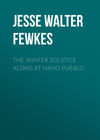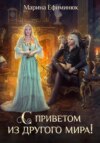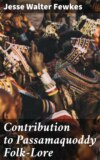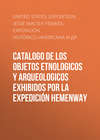Buch lesen: «The Winter Solstice Altars at Hano Pueblo», Seite 3
Contemporary Ceremonies
The Winter Solstice ceremony is celebrated in Walpi, Sitcomovi, and Hano, by clans, all the men gathering in the kivas of their respective pueblos. The Soyaluña is thus a synchronous gathering of all the families who bring their fetishes to the places where they assemble. The kivas or rooms in which they meet, and the clans which assemble therein, are as follows:
Walpi
Moñkiva: Patki, Water-house; Tabo, rabbit; Kükütce, Lizard; Tuwa, Sand; Lenya, Flute; Piba, Tobacco; and Katcina.
Wikwaliobikiva: Asa.
Nacabkiva: Kokop, Firewood; Tcüa, Snake.
Alkiva: Ala, Horn.
Tcivatokiva: Pakab, Reed; Honau, Bear.
Sitcomovi
First Kiva: Patki, Water-house; Honani, Badger.
Second Kiva: Asa.
Hano
Moñkiva: Sa, Tobacco; Ke, Bear; Kolon, Corn, etc.
Tewakiva: Nañ, Sand; Okuwuñ, Rain-cloud, etc.
The altars or fetishes in the five Walpi kivas are as follows:
The altar described in a former publication18 is the most elaborate of all the Winter Solstice fetishes at Walpi, and belongs to the Patki and related clans.
The Asa family in the Wikwaliobikiva had no altar, but the following fetishes: (1) An ancient mask resembling that of Natacka and called tcakwaina,19 attached to which is a wooden crook and a rattle; (2) an ancient bandoleer (tozriki); and (3) several stone images of animals. The shield which the Asa carried before the Moñkiva altar had a star painted upon it.
The Kokop and Tcüa families, in the Nacabkiva, had no altar, but on the floor of the kiva there was a stone image which was said to have come from the ancient pueblo of Sikyatki, a former village of the Kokop people.
There was no altar in the Alkiva, but the Ala (Horn) clan which met there had a stone image of Püükoñhoya, and on the shield which they used in the Moñkiva there was a picture of Alosaka.
The Pakab20 (Reed or Arrow) people had an altar in the Tcivatokiva where Pautiwa presided with the típoni or palladium of that family.
The writer was unable to examine the fetishes of the Honani and Asa clans, who met in the two Sitcomovi kivas. It was reported that they have no altars in the Soyaluña, but a study of their fetishes will shed important light on the nature of the rites introduced into Tusayan by these clans. Tcoshoniwa is chief in one of these kivas.21
Pocine, chief of the Tewakiva, belongs to the Nañ-towa, or Sand clan, and is the elder son of Pocilipobi. Puñsauwi, his uncle, is Pocilipobi's brother. As the kimoñwi or village chief of the Tewa colonists, when they came into Tusayan, belonged to the Sand clan, we may suppose this altar to be hereditary in this family.
Anote, the chief of the Moñkiva of Hano, is the oldest man of the Sa-towa or Tobacco clan. Satele, who assisted him in making the altar, is a member of the Ke or Bear clan. Patuñtupi, who was present when the altar was made at Hano, belongs to the Kolon or Corn clan.
The Winter Solstice Ceremony
The Tûñtai or Soyaluña ceremony of the East Mesa in 1898 extended from December 9th to the 19th inclusive, and the days were designated as follows:
9th, Tcotcoñyuñya (Tcotcoñya), Smoke assembly.
10th, Tceele tcalauûh, Announcement.
11th, Cüs-tala, First day.
12th, Lüc-tala, Second day.
13th, Paic-tala, Third day.
14th, Yuñya, Assemblage.
15th, Sockahimû.
16th, Komoktotokya.
17th, Totokya, Totokpee.
18th, Pegumnove.
19th, Navotcine.
The active secret ceremonies began on the 14th and extended to the 19th. Yuñya was the day on which the Walpi chiefs entered their kivas, and Totokya that on which the most important secret rites were performed.
Tcotcoñyuñya, Smoke assembly. The time of the Soyaluña is fixed by Kwatcakwa, Sun-priest of the Patki clan, who determines the winter solstice by means of observations of sunset on the horizon, as elsewhere described. The Smoke assemblage at Walpi occurred after sunset on December 9th, in the house of Anwuci's wife, adjoining the Moñkiva, and was attended by Supela, Kwatcakwa, Sakwistiwa, Kwaa, and Anawita, all chiefs belonging to the Patki clan. The Smoke assemblage at Hano, preliminary to the Tûñtai, was also held after sunset on December 9th, and was attended by the following chiefs: Anote (Tem[)e]), Sa-towa; Satele, Ke-towa; Pocine (Koye), Nañ-towa; Patuñtupi, Kolon-towa.
There was no formal notification of Tûñtai from the housetops of Hano on the following morning, the Soyaluña announcement from Walpi serving all three pueblos on the East Mesa.
The formal announcement was made by Kopeli at daybreak of December 10th. Hoñyi, the regular tcakmoñwi, or town-crier, was snowbound at Keam's Canyon, and consequently was unable to perform this function.
The Smoke assemblage and its formal announcement at daybreak on the following morning have been observed in the Snake dance, and in the Flute, New-fire, and Soyaluña ceremonies; it probably occurs also in the Lalakoñti and Mamzrauti. It takes place several days before the Assembly day, when the chief enters the kiva and sets his natci or standard on the kiva hatch to announce that he has begun the ceremonies.
Kivas at Hano
There are two kivas in Hano, one of which, called Tewakiva, is situated at the head of the trail to the pueblo. The other, called the Moñkiva, is built in the eastern part of the plaza, and, as its name implies, is the "chief" Hano kiva. Both these semi-subterranean rooms are rectangular22 in shape, and in structural details resemble the kivas of Walpi. Each has a hatchway entrance in the middle of the roof, and is entered by means of a ladder which rests on the floor near a central fireplace. Neither of the Hano kivas has a window, but each has a raised platform for spectators east of the fireplace.23
Altar in the Moñkiva at Hano
Anote,24 the chief of the Moñkiva, constructed his altar (plate XVIII) on the day above mentioned as Paic-tala. He anticipated the others in making it, and began operations, about 10 A.M., by carefully sweeping the floor. His fetishes and other altar paraphernalia were in a bag on the floor at the western end of his kiva, but there was no típoni, or chieftain's badge, even on the completed altar.
Shortly after Anote had finished sweeping the floor of the kiva, Satele entered, followed a few minutes later by Patuñtupi.25 These three men, with Kalakwai, who was weaving a blanket, were the only persons in the kiva while the altar was being made. Immediately after the other chiefs came in, Anote began the making of prayer-sticks. Four of these were made, each of characteristic Tewa form.
Each of these prayer-sticks was double the length of the middle finger, and was painted black with green pigment at the blunt end. On one of the two sticks which compose this prayer offering, there was cut a facet which was painted green with black dots representing eyes and mouth. The stick without the facet was called the male, and upon it a ferrule was incised.
The two sticks were bound together with two cotton strings in two places, but no packet of prayer-meal was appended as in Hopi prayer-sticks (pahos).26 A string with a terminal feather was attached to that which bound the two sticks together. Anote likewise made many feathered strings called nakwakwocis, and Satele fashioned two prayer-sticks; all of these were laid in a basket-tray on the floor.
After these prayer offerings had been completed, Anote placed on the floor a blanketful of moist clay which he further moistened and kneaded, fashioning a part of it into a cylinder about a foot and a half long, and two inches in diameter. This object was made blunt at one end and pointed at the other. The image represents Avaiyo, the Tewa name of Palülükoñ, the Great Serpent. He added to the blunt end, or head, a small clay horn,27 and inserted a minute feather in the tip of the tail. He fashioned into a ball the clay that remained after making the effigy of the serpent, patting it into a spherical compact mass about the size of a baseball. This, called the natci, later served as the pedestal to hold two eagle-wing feathers, and was placed at the kiva hatch each day to inform the uninitiated that ceremonies were in progress.
Having finished the effigy of the Great Serpent and formed the clay cylinder to his liking, Anote made on the western side of the floor of the kiva a ridge of sand, a few inches high and about two feet long, parallel with the western wall. While making this ridge he sat between it and the kiva wall. Having patted this sand ridge to the proper height, he removed from their wrapping of coarse cloth, four sticks, each about two feet long. These sticks, dingy with age, were tied in pairs, and were called poñya-saka, "altar ladders." They were inserted in the ridge in pairs, one on each side, and between them was placed in the sand a row of eagle feathers. As these were being put in position by Satele, Anote sang in a low tone, the song continuing as the other parts of the altar were arranged.28 Anote was frequently obliged to prompt his associate regarding the proper arrangement of the objects on the altar.
Satele next drew a line of prayer-meal before the ridge of sand, and from it, as a base line, made three deep semicircles representing rain-clouds. These were drawn as simple, elongated outlines, but immediately the chief sprinkled meal on the floor over the space enclosed by them. The curved edges of the three rain-cloud symbols were then rimmed with black sand or powdered coal. About twenty short, parallel lines, representing falling rain, were next drawn on the floor with cornmeal, and alternating with them the same number of black lines. Satele then placed upon the rain-cloud symbols, skeleton puma paws, two for each rain-cloud. At the apex of each symbolic cloud a stone fetish of a bear was deposited, and by the side of each an arrow-point or other stone object was laid.












